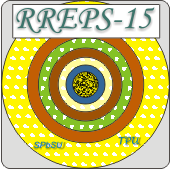Speaker
Alexander Potylitsyn
(National Research Tomsk Polytechnic University)
Description
Coherent emission from an electron bunch moving in magnetic fields is described using the phase shift for each electron in a bunch [1] $\varphi^{(i)}_{SR}=\exp\left \{i~\mathit{\mathbf{k~r}}_i \right \}$, where $\mathbf k$ the wave vector, $\mathbf r_i= \left\{x_i,y_i,z_i\right\}$ is radius-vector of $i$-th electron. For such radiation mechanism as parametric X-ray radiation (PXR) for which atom electrons from crystallographic plane are emission sources the time dependence has to be included into phase shift:
$$
\varphi^{(i)}_{PXR}=\exp\left \{i\left(\mathit{\mathbf{k~r}}^{(i)}_{pl}-\omega~t^{(i)} \right)\right \},~~~~~~~~~(1)
$$
Here $\mathit{\mathbf{r}}^{(i)}_{pl}$ is radius-vector characterizing the point at the plane where $i$-th electron crosses it, $t^{(i)}$ is the time interval characterizing time of this crossing. The first term in (1) is responsible for spatial coherence, the second one - for temporal. If a crystallographic plane is tilted at the angle $\theta_B$ relative to the electron beam then we have:
$$
\mathit{\mathbf{r}}^{(i)}_{pl}=\left \{x_i,y_i,z_i/\tan\theta_B\right \}, \omega t^{(i)}=\frac{2 \pi}{\beta\lambda}\left (x_i/\tan \theta_B-z_i\right )
$$
Influence of both terms on characteristics of coherent PXR produced by microbunched beams is considered in the report.
[1] Y.Shibata, K.Ishi, T.Ohsaka et al. NIM A 301(1991) 161-166
Author
Alexander Potylitsyn
(National Research Tomsk Polytechnic University)
